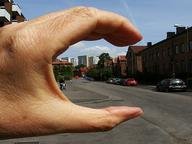Quiz Answer Key and Fun Facts
1. This first began way back in Egypt in the time period 3340-3056 BC. Involving people, what was it?
2. To which family of plants does the Echinopsis mamillosa belong?
3. The ancient area of Mesopotamia is said to be the first area in the world to begin building what?
4. What word from the ancient Greek language means "sleeping place"?
5. This entity goes through three separate stages at its completion. What is it?
6. Today we use a word that has come down to us from Saint Martin of Tours. Do you know what this is?
7. A French Military decoration for bravery is known as *what* de guerre?
8. Australia's capital city is called Canberra. What are the residents of this city known as?
9. Can you name the small fish from the Amazon from the following choices?
10. An Asian manual labourer or slave from the 19th century was known by what term?
Source: Author
Creedy
This quiz was reviewed by FunTrivia editor
Nannanut before going online.
Any errors found in FunTrivia content are routinely corrected through our feedback system.


